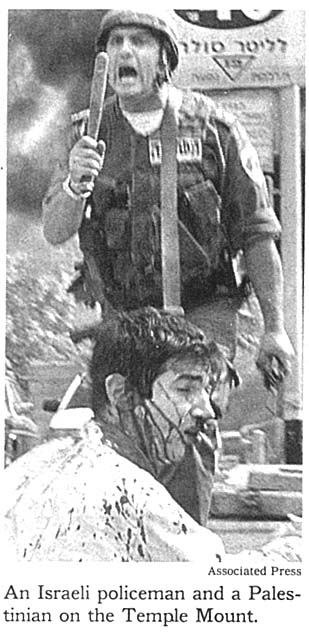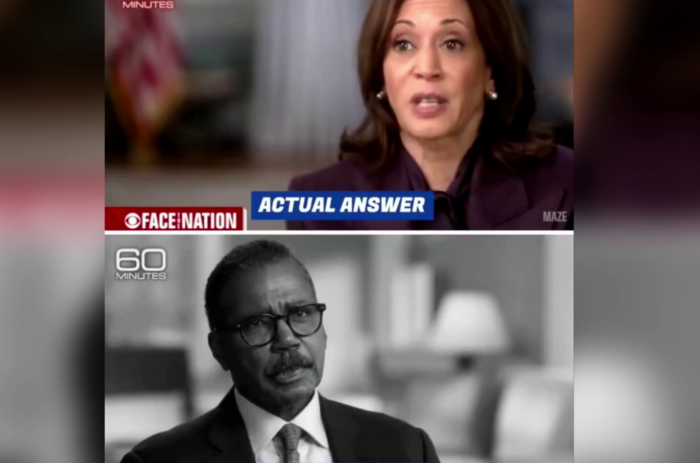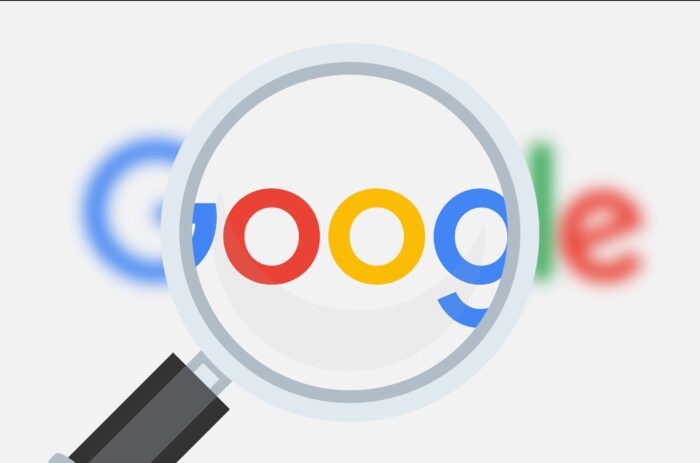redo Jump to...
print Print...
Example of Media Bias:

NOTE: We have linked to a video of a first meeting this month between the young man and the “policeman” in the photo.
On September 30, 2000, The New York Times, Associated Press and other major media outlets published a photo of a young man — bloodied and battered — crouching beneath a club-wielding Israeli policeman. The caption under the photo of the two read: “an Israeli policeman and a Palestinian on Temple Mount.”— with the clear implication that the Israeli soldier was the one who beat him. Note the expressions on the faces of the “policeman” and the boy. The false and deceptive caption manipulated readers into believing that an angry Israeli policeman severely beat a helpless Palistinian boy until he was drenched in his own blood.
Now read an email to the New York Times from the father of the boy to learn the truth about the identity of the boy, who attacked him, why he was attacked, and why the Israeli “policeman” was angry:
Regarding your picture on page A5 of the Israeli soldier and the Palestinian on the Temple Mount — that Palestinian is actually my son, Tuvia Grossman, a Jewish student from Chicago. He, and two of his friends, were pulled from their taxicab while traveling in Jerusalem, by a mob of Palestinian Arabs, and were severely beaten and stabbed.
That picture could not have been taken on the Temple Mount because there are no gas stations on the Temple Mount and certainly none with Hebrew lettering, like the one clearly seen behind the Israeli soldier attempting to protect my son from the mob.
In response, the New York Times published a half-hearted correction which identified Tuvia Grossman as “an American student in Israel” — not as a Jew who was beaten by Arabs. The “correction” also noted that “Mr. Grossman was wounded” in “Jerusalem’s Old City” — although the beating actually occurred in the Arab neighborhood of Wadi al Joz, not in the Old City.
In response to public outrage at the original error and the inadequate correction, The New York Times reprinted Tuvia Grossman’s picture — this time with the proper caption — along with a full article detailing his near-lynching at the hands of Palestinians rioters.
The photo of a bloodied Tuvia Grossman became a symbol in the struggle to ensure that Israel receives the fair media coverage that every nation deserves.
Read the complete story at honestreporting.com/articles/reports/The_Photo_that_Started_it_All.asp.
Read Tuvia’s story in his own words at aish.com/jw/id/48890577.html.
Watch a current video of the policeman and boy, now 10 years later, meeting for the first time, here:
To accurately identify different types of bias, you should be aware of the issues of the day, and the liberal and conservative perspectives on each issue.
Types of Media Bias:Questions
1. How important do you think photos/captions are to a reader’s impression of a news story? Explain your answer.
2. Do you think that the Associated Press and New York Times intentionally mislead readers? Explain your answer.
Scroll down to the bottom of the page for the answers.
Answers
1. Photos and captions are very important – they influence a reader’s impression of a news event. Even a well-written, objective article can end up misunderstood if the photos/captions around it distort the story rather than clarify it. Explain your answer.
2. Opinion question. Answers vary.



